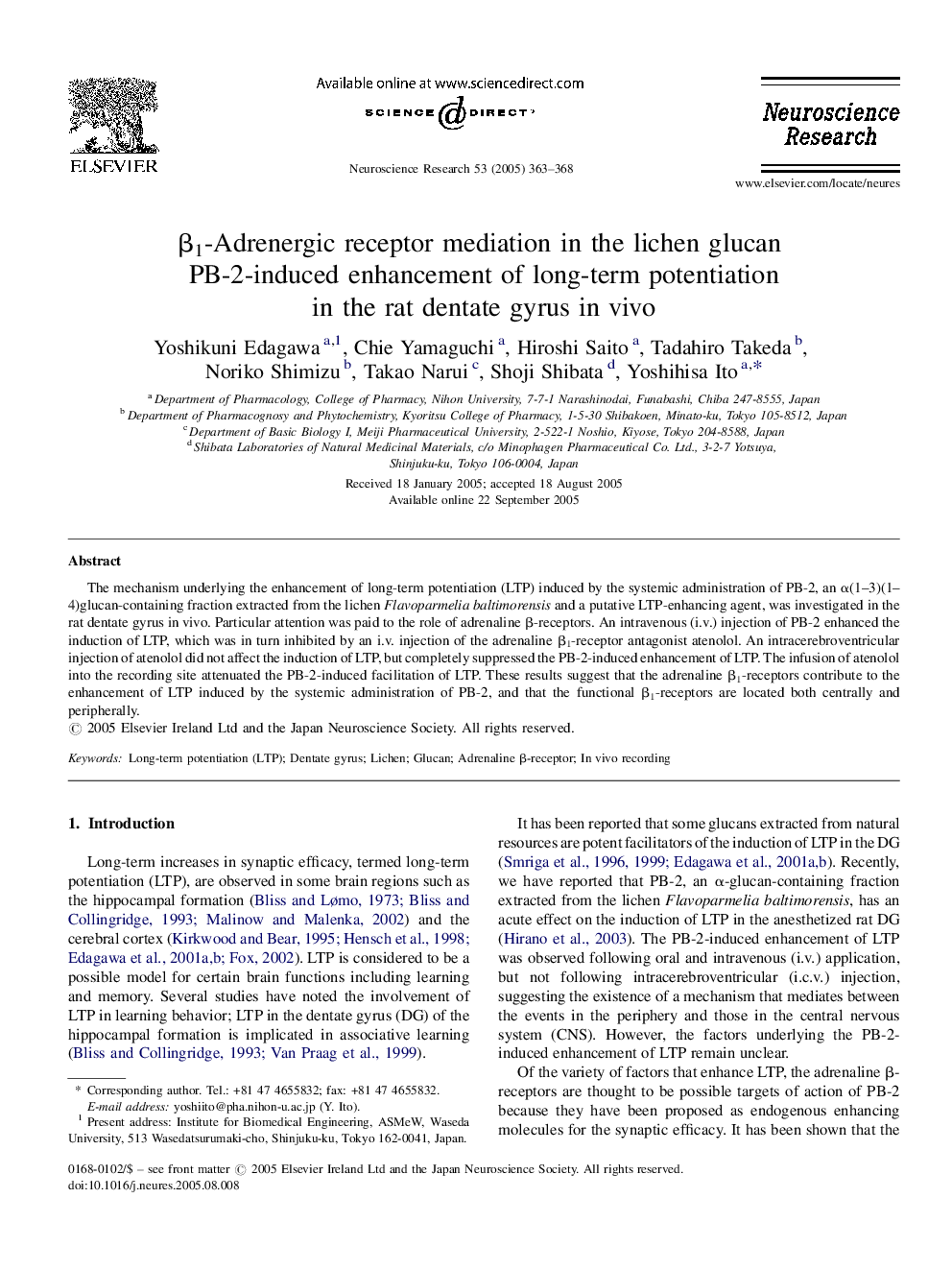| Article ID | Journal | Published Year | Pages | File Type |
|---|---|---|---|---|
| 9434436 | Neuroscience Research | 2005 | 6 Pages |
Abstract
The mechanism underlying the enhancement of long-term potentiation (LTP) induced by the systemic administration of PB-2, an α(1-3)(1-4)glucan-containing fraction extracted from the lichen Flavoparmelia baltimorensis and a putative LTP-enhancing agent, was investigated in the rat dentate gyrus in vivo. Particular attention was paid to the role of adrenaline β-receptors. An intravenous (i.v.) injection of PB-2 enhanced the induction of LTP, which was in turn inhibited by an i.v. injection of the adrenaline β1-receptor antagonist atenolol. An intracerebroventricular injection of atenolol did not affect the induction of LTP, but completely suppressed the PB-2-induced enhancement of LTP. The infusion of atenolol into the recording site attenuated the PB-2-induced facilitation of LTP. These results suggest that the adrenaline β1-receptors contribute to the enhancement of LTP induced by the systemic administration of PB-2, and that the functional β1-receptors are located both centrally and peripherally.
Related Topics
Life Sciences
Neuroscience
Neuroscience (General)
Authors
Yoshikuni Edagawa, Chie Yamaguchi, Hiroshi Saito, Tadahiro Takeda, Noriko Shimizu, Takao Narui, Shoji Shibata, Yoshihisa Ito,
